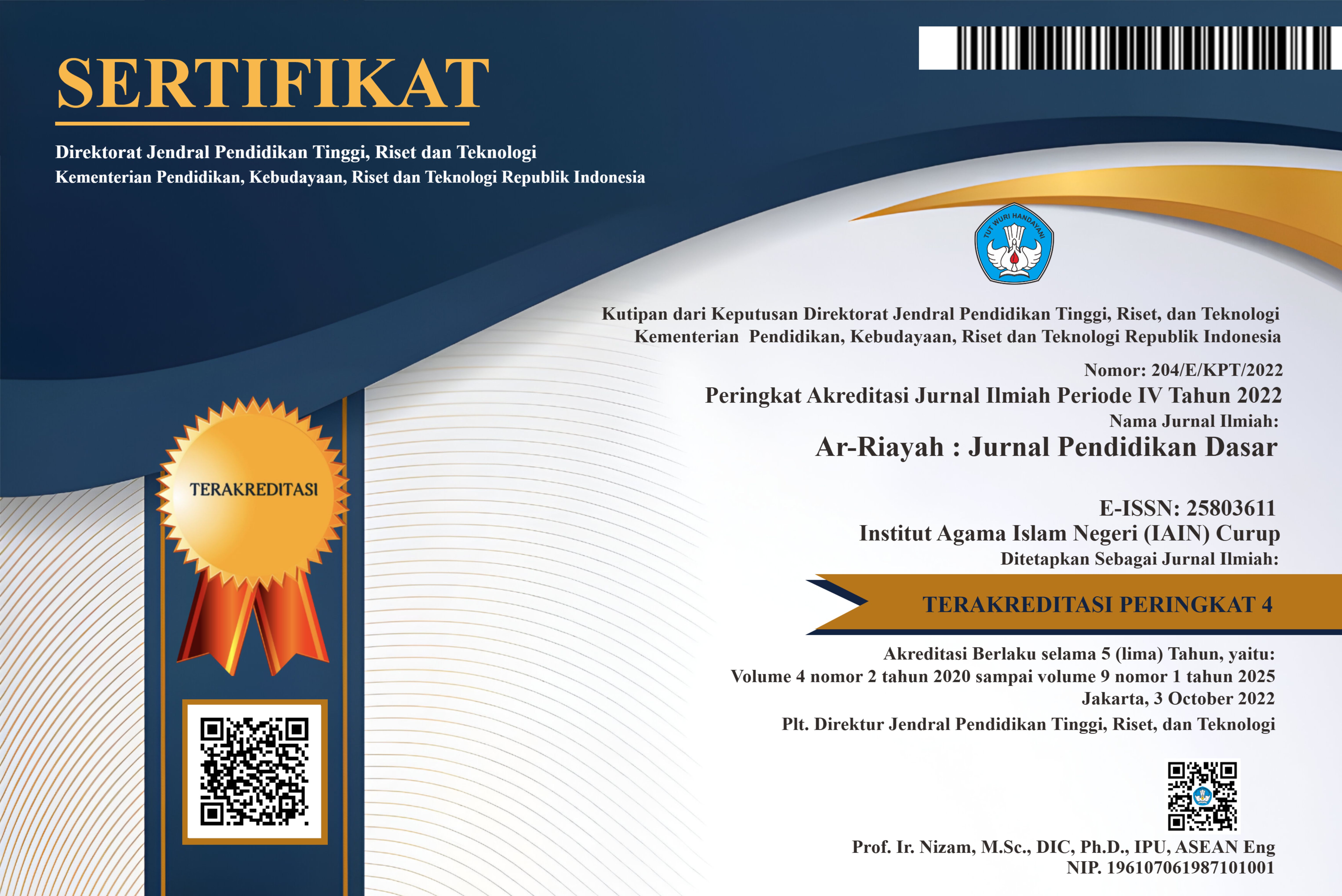Tracer Study: Studi Rekam Jejak dan Tingkat Kepuasan Pengguna Terhadap Lulusan Program Studi Pendidikan Guru Madrasah Ibtidaiyah Institut Agama Islam Negeri Curup
DOI:
https://doi.org/10.29240/jpd.v5i1.2416Keywords:
Tracer Study, Stakeholders’ Satisfaction, GraduatesAbstract
The aims of this study are to determine: 1) the acceptance numbers of graduates for job opportunities, 2) the waiting period for graduates to get a job, 3) the relevance of the graduates’ qualification to the field of work, and 4) the level of stakeholders’ satisfaction with graduates of the PGMI (Education of Basic School Teachers) study program of IAIN (The Institute for Islamic Studies) Curup. This research method was survey research with quantitative descriptive data analysis. The data collection was carried out using questionnaires sent directly via email, social media, face to face and by telephone. The research results showed that: 1) the graduates of PGMI Study Program of IAIN Curup were well accepted in job opportunities, 2) the waiting period for graduates to get a job was in the range of 0 - 3 months after graduation, 3) there was relevance of graduates’ work field to their qualification, 4) the level of stakeholders’ satisfaction with graduates of the PGMI Study Program of IAIN Curup was in very good criteria. Based on the results of the study, it was suggested that institutions need to carry out tracer study activities in a sustainable manner so that they can find out the condition of graduates after completing their education in the institutions. Then, feedback was expected from alumni and stakeholders to get a higher response rate. In addition, the results of this study can be a consideration for stakeholders at universities to develop curriculum so that they can improve the competence of graduates in accordance with the demands of the work field.
Downloads
References
Badan Akreditasi Nasional PT. (2009). Borang Akreditasi Nasional Perguruan Tinggi.
STAIN Curup. 2017. Kurikulum KKNI (Kerangka Kualifikasi Nasional Indonesia) Program Studi Pendidikan Guru Madrasah Ibtidaiyah IAIN Curup.
Kelsey, Kathleen Dodge and Bond, Julie A, A model for measuring customer satisfaction within an academic center of excellence, dalam Managing Service Quality 11, No.5, 2001.
Muri, Y. (2016). Metode Penelitian: Kuantitatif, Kualitatif, dan Penelitian Gabungan (Edisi Pertama). Prenadamedia Group.
Schomburg, Harald (2003). Handbook for Graduate Tracer study. Moenchebergstrasse Kassel, Germany.
Sugiono, (2008). Metode Penelitian Pendidikan: Pendekatan Kuantitatif, Kualitatif, dan R & D. Bandung: Alfabeta.
Zeithmal, Valari, A. Parasuraman A. and Berry, Leonard. Delivering Quality Service Balancing Customer Perception and Expectation. 1990. New York: The Free Press
Downloads
Published
How to Cite
Issue
Section
Citation Check
License
Authors who publish with Ar-Riayah: Jurnal Pendidikan Dasar agree to the following terms:
Authors retain copyright and grant the journal right of first publication with the work simultaneously licensed under a Creative Commons Attribution-NonCommercial-ShareAlike 4.0 International License (CC BY-NC-SA 4.0) that allows others to share the work with an acknowledgment of the work's authorship and initial publication in this journal.
Authors are able to enter into separate, additional contractual arrangements for the non-exclusive distribution of the journal's published version of the work (e.g., post it to an institutional repository or publish it in a book), with an acknowledgment of its initial publication in this journal.
- Authors are permitted and encouraged to post their work online (e.g., in institutional repositories or on their website) prior to and during the submission process, as it can lead to productive exchanges, as well as earlier and greater citation of published work (See The Effect of Open Access).










